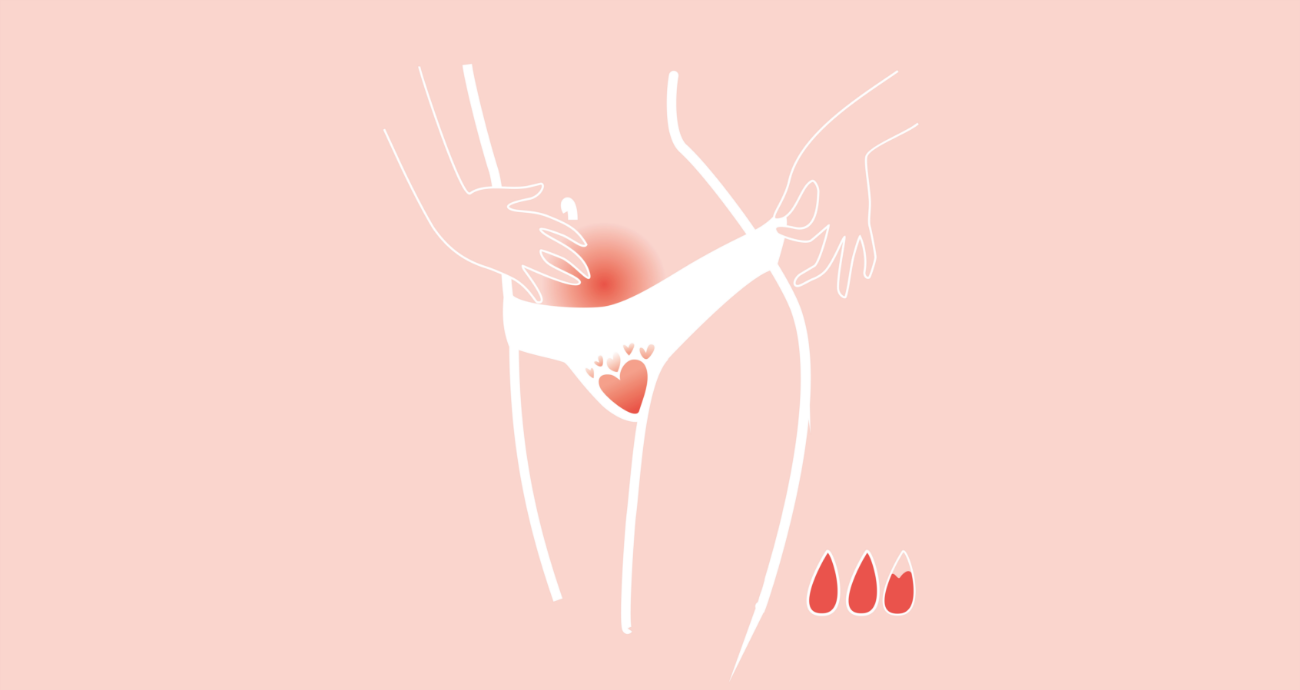What Causes Spotting?, Causes of Vaginal Bleeding When TTC
$ 21.00 · 4.8 (713) · In stock

There are many causes of vaginal bleeding that can range from implantation bleeding to pregnancy loss. Keep reading to learn more about vaginal spotting.
Shop beautiful, evidence-backed fertility and pregnancy essentials with a net-zero plastic footprint. Natalist's team of moms and doctors has been there and is making the journey to parenthood better for others. Always free shipping. Shop now!
Originally published 12/03/2019. Updated for accuracy and relevancy on 09/02/2023.
While trying to get pregnant, you may experience spotting. It could be implantation bleeding, ovulation, cervical or uterine polyps, or a miscarriage. Here’s how to know the difference.
By Dr. Nazaneen Homaifar
You’re trying to get pregnant, all seems to be going well, but you suddenly notice spotting in your underwear. You may have even had a positive pregnancy test then implantation bleeding. Does it mean you’re not pregnant? Not necessarily. It’s very normal to experience a little bit of vaginal bleeding during implantation—we’ll explain why that happens, and how to tell it apart from a regular period, below.
What to Know About Implantation
If you’re someone who falls into the category of a “regular” menstrual cycle, around 28 days each, you’ll likely ovulate around day 14 when off your birth control. [1] During ovulation, your ovaries release an egg, which travels down the fallopian tube to the uterus. The journey down the fallopian tube can take a few days and if the egg is fertilized by a sperm, the fertilized egg, or embryo, usually travels down and implants into the uterine lining, or decidua. [1] (The uterine lining is what your body sheds when you have your period—its intended purpose is to shelter a fertilized egg).
What Is Implantation Bleeding?
Implantation, when the fertilized egg burrows into the uterine lining, can cause a little bit of the lining to detach. [2] If that happens, it can pass through your cervix and vagina and looks like spotting or a light period.
It looks a lot like your period because it’s the same substance as your period—however you will experience light bleeding comparatively and this is not abnormal bleeding. Instead it is just happening for a different reason. The timing also makes it easier to assume that implantation bleeding is actually your period—implantation happens around 10 – 14 days after fertilization, around the same time as your missed period. [2]
Implantation symptoms also seem like your menstrual period because it can bring the same side effects that periods can have: light cramping, mood swings, breast tenderness, nausea, and pain in your lower back. [2]
In general, implantation bleeding is much lighter than most regular menstrual bleeding. It should cause spotting for a light period for a day or two.
More Causes of Vaginal Spotting
When we think about mid-cycle bleeding in the preconception timeframe, it is useful to think about bleeding that happens between menstrual cycles or bleeding that happens after a positive pregnancy test.
Spotting in between menstrual cycles can result from ovulation, cervical or uterine polyps, endometrial hyperplasia, or a friable cervix (irritation of tissue on the surface of the cervix).
Keep in mind that most home pregnancy test options won’t be able to pick up pregnancy hormone levels (beta human chorionic gonadotropin or b-hcg) producing a positive test result until about three to four days after a missed period. This is why it is recommended to get a blood pregnancy test through your OBGYN to ensure a true positive result. Bleeding after a positive early pregnancy test can occur in 15-20% of pregnancies in the first trimester, but this does not mean that a pregnancy loss has occurred. [3] The frequency and volume of bleeding, along with other factors like ultrasound findings, play a role in helping to determine how concerning it is. Bleeding can be a sign of:
Miscarriage: if it doesn’t result in one, it is called a threatened miscarriage
Ectopic pregnancy: a pregnancy outside of the uterus, which is considered an emergency, but is overall rare (2% of pregnancies)
Bleeding from a cervical, uterine, or vaginal source: such as an infection, polyp, laceration, etc.
When To Seek Help For Vaginal Bleeding
While implantation bleeding is normal, it is usually considered a diagnosis of exclusion. That means a healthcare provider will want to make sure there are no other concerning reasons that could contribute to the bleeding. If you’ve had a positive pregnancy test and notice some light or heavy bleeding, cramping, significant pain, fever, or chills, call your provider’s office to determine what the next best steps are such as a blood test. You know your body—if you think something’s wrong, trust that instinct.
Learn more about implantation bleeding and other early signs of pregnancy in our article, Is this Spotting My Period or am I Pregnant?
References:
Wilcox AJ, Dunson D, Baird DD. The timing of the fertile window in the menstrual cycle: day specific estimates from a prospective study. BMJ. 2000;321(7271):1259-1262. doi:10.1136/bmj.321.7271.1259
Kim SM, Kim JS. A Review of Mechanisms of Implantation. Dev Reprod. 2017;21(4):351-359. doi:10.12717/DR.2017.21.4.351
Bleeding During Pregnancy. FAQ 038. ACOG. August 2022. URL.

Pregnancy Symptoms Week By Week: Guide To Pregnancy Stages, 59% OFF

Pregnancy Symptoms Week By Week: Guide To Pregnancy Stages, 59% OFF

Pregnancy Symptoms Week By Week: Guide To Pregnancy Stages, 59% OFF

Pregnancy Symptoms Week By Week: Guide To Pregnancy Stages, 59% OFF
Pregnancy Symptoms Week By Week: Guide To Pregnancy Stages, 59% OFF

Pregnancy Symptoms Week By Week: Guide To Pregnancy Stages, 59% OFF

Pregnancy Symptoms Week By Week: Guide To Pregnancy Stages, 59% OFF

Pregnancy Symptoms Week By Week: Guide To Pregnancy Stages, 59% OFF

Pregnancy Symptoms Week By Week: Guide To Pregnancy Stages, 59% OFF

Pregnancy Symptoms Week By Week: Guide To Pregnancy Stages, 59% OFF